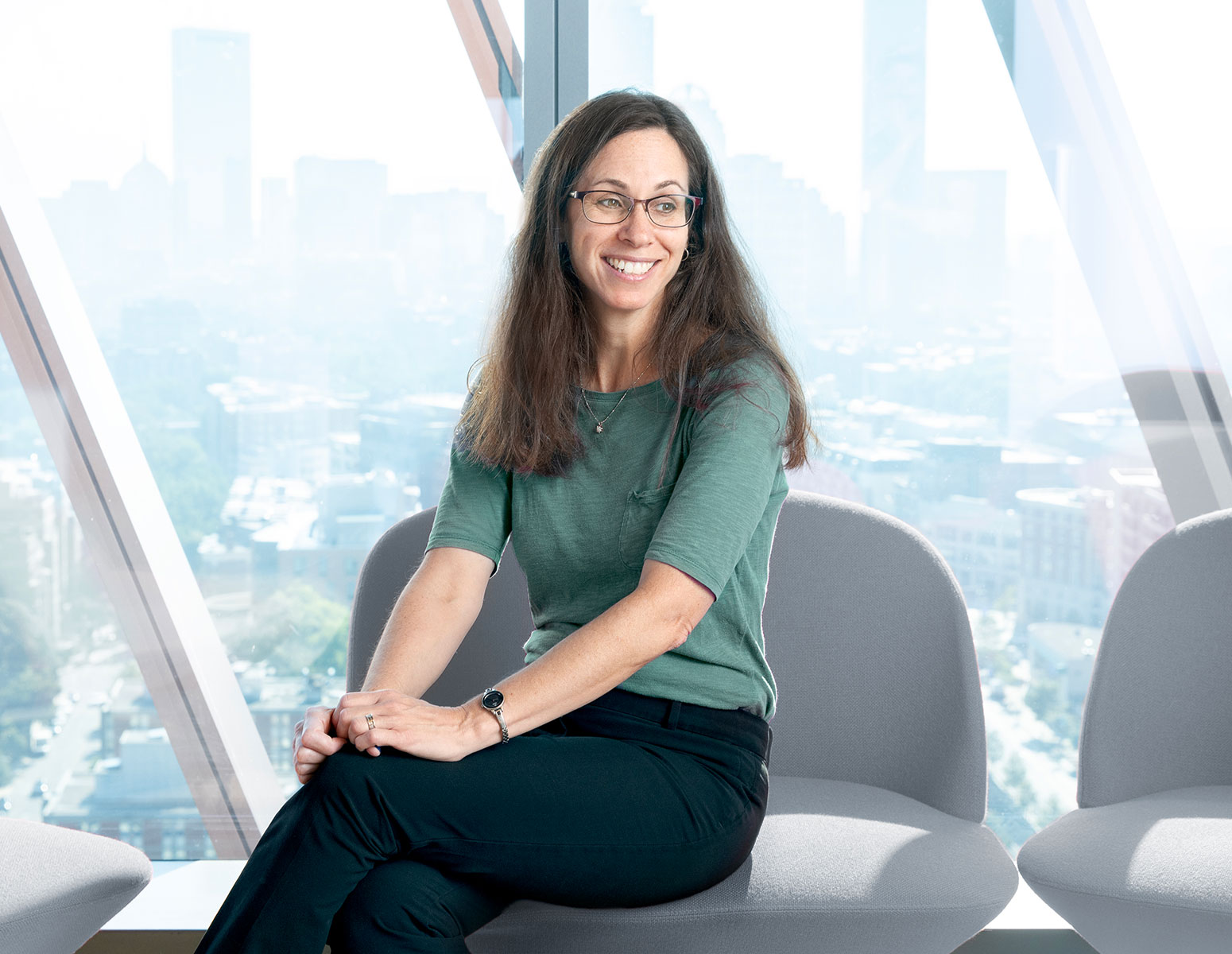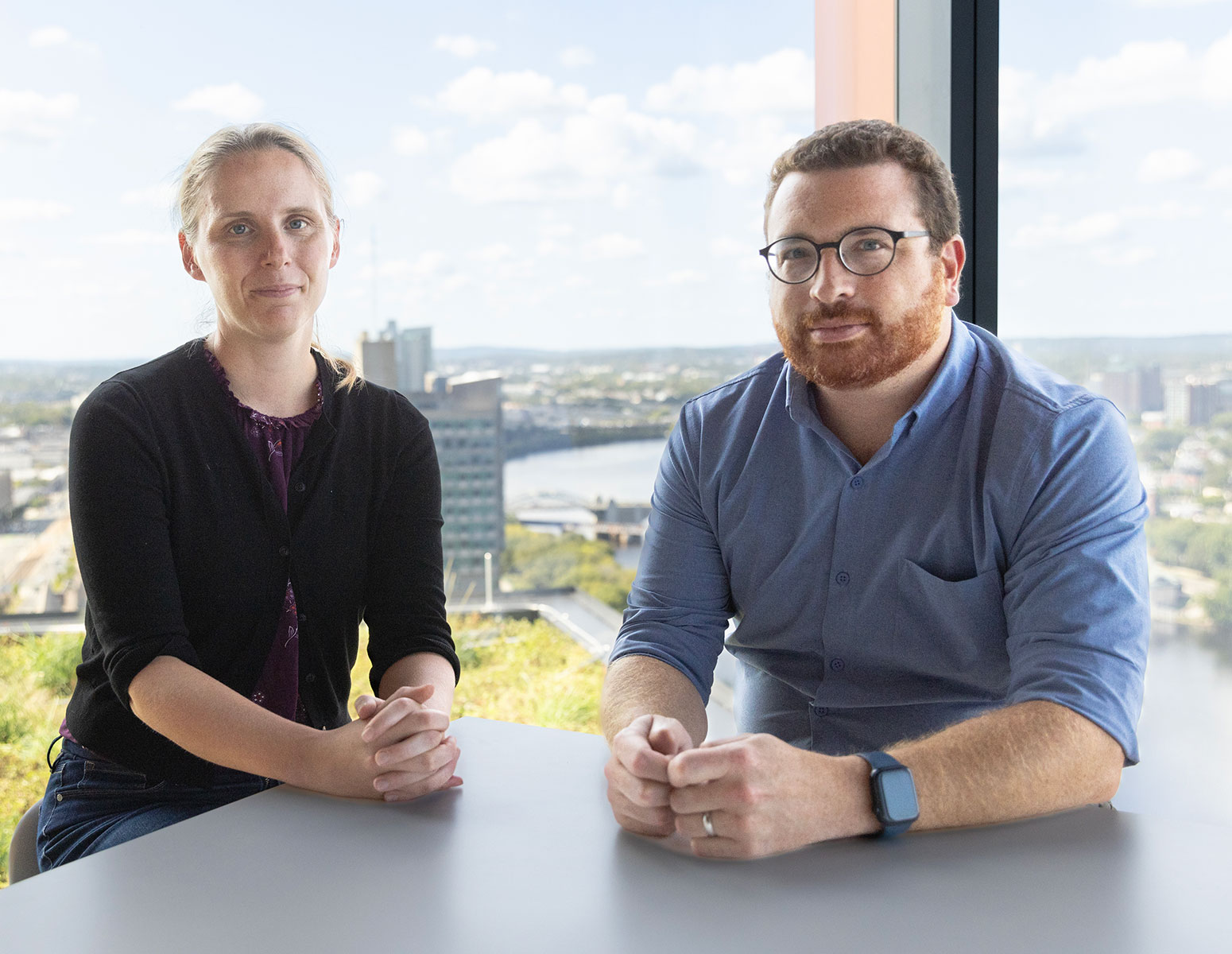Building Better Cities
How Arts & Sciences has emerged as a hub for urban sustainability research and solutions
How Arts & Sciences has emerged as a hub for urban sustainability research and solutions
Two global trends collided in 2023: the warming of the atmosphere and the growth of urban areas. Phoenix, Ariz., the fifth-largest city in the US, reached 110 degrees on 31 consecutive days. Heat-related hospitalizations spiked and people burned themselves on scorching asphalt. Texas, home to several of the country’s largest and fastest-growing cities, experienced the second-hottest summer ever, leading to a BBC headline that asked if the Lone Star State could “become too hot for humans.”
Record heat waves aren’t the only problems cities face. As more people move to urban centers—the World Bank projects that 70 percent of the world’s population will live in cities by 2050—they quicken the spread of disease and exacerbate pollution and economic disparity.
Cities will need creative ways to address economic, public health, and social equity issues to thrive amid this growth—and Arts & Sciences has emerged as a leader in researching these challenges, developing solutions, and preparing the next generation of experts. One example is the BU Graduate Program in Urban Biogeoscience & Environmental Health (BU URBAN), which emphasizes experiential learning in its multidisciplinary approach to training PhD students. Another is the Initiative on Cities (IoC), the University’s 10-year-old hub for urban research and teaching, which provides seed grants to faculty and surveys mayors across the country about their top priorities and challenges.
“Sustainable development is how we must live today if we want a better tomorrow, by meeting present needs without compromising the chances of future generations to meet their needs.”
—United Nations Sustainable Development Summit
(September 2023)
Biologist Pamela Templer, who researches the effects of environmental change, says that forest ecologists used to avoid studying cities. Historically, they focused “where it’s wild and pure and away from development.” But that’s changed as scientists have gained a more nuanced understanding of the roles that urban trees can play in mitigating climate change and improving human health.

“People are increasingly recognizing that if you ignore sustainability in the city, you’re ignoring the needs of people,” says Templer, a professor and chair of biology.
Trees can remove carbon from the atmosphere, lower cooling costs, reduce noise pollution, and improve mental health. One of Templer’s interests is how forest fragmentation—the splicing of forests by roads and buildings—impacts the health and productivity of trees. She and several colleagues—including Lucy Hutyra, a professor of Earth and environment, who recently received a MacArthur “genius grant” for her work—are studying forests in eight sites that range from Arnold Arboretum in Boston to central Massachusetts.
“We think about the stress of the city—it’s hot in the summer, it’s more polluted, it’s more developed, more cut up,” she says. “We thought that a forest in the city wouldn’t be a good carbon sink.” But one of the group’s findings was a surprise: urban trees that survive beyond the sapling stage grow faster, sequester more carbon on an individual basis, and have soils that release less carbon dioxide than rural forests. They also learned that trees and soils on forest edges capture more nitrogen—a key contributor to global warming—which might be one reason for how well they grow in urban environments.
“What we’re showing is that these trees are really resilient and can take advantage of the conditions that they have,” Templer says. And, if cities can protect their existing urban forests while continuing to foster new tree growth, everyone will benefit.
“Housing policy is arguably the most powerful policy that local governments have available to affect the day-to-day well-being of folks,” says Katherine Levine Einstein, an expert on urban politics and policy. Housing policies can lower the cost of living, improve mass transit access, and reduce greenhouse gas emissions. But existing laws and zoning restrictions often stand in the way of affordable housing development.
4.4
The number of people, in billions, who currently live in cities, representing 56 percent of the Earth’s population, according to the World Bank.
70
The percent of Earth’s population that the World Bank projects will live in cities by 2050.
80
The percent of Americans who already live in urban areas, according to the US Census.
Einstein and Maxwell Palmer, both associate professors of political science, study the positive and negative outcomes of housing policies. In 2022, they examined the Massachusetts subsidized housing market and found several exclusionary practices—including racial discrimination and lack of public transportation—that made many homes inaccessible to those most in need of them. They also looked at the inadequate supply: one provider of subsidized housing in Allston-Brighton had a 17,000-family waitlist for their inventory of 500 units. In another 2022 project, Einstein and Palmer documented how the people shaping housing policy often aren’t representative of the communities affected. How people stand in the way of development is a topic they cover in Neighborhood Defenders: Participatory Politics and America’s Housing Crisis (Cambridge University Press, 2019), a book they coauthored with colleague David Glick, an associate professor of political science.

“There’s a really interesting tension between needing places to change in order to become sustainable in the climate sense and people liking where they live—they don’t want it to change,” says Palmer. That tension often manifests as a clash between state and federal priorities—such as increasing affordable housing and reducing carbon emissions—and local policies designed to maintain the character of a particular community. A well-meaning zoning policy might limit the height of buildings or restrict occupancy to elderly residents, Palmer says. But it may also further entrench segregation and drive housing prices higher.
Einstein and Palmer both testified in support of a new Massachusetts law, the MBTA Communities act, which incentivizes towns along public transportation routes to change existing zoning laws to allow for multifamily housing developments. Now, they’re watching to see how effectively it’s rolled out.
Housing policy is arguably the most powerful policy that local governments have available to affect the day-to-day well-being of folks.
That sort of planning at the state or federal level is crucial for cutting through the patchwork of local regulations, Einstein says. “The meaningful development of thousands of new units of housing in Massachusetts, in sustainable communities that give more people the opportunity to live here—and for those efforts to be scalable nationally—that’s the most exciting application of our work.”
Dan Li studies fluid dynamics, including the ways that air, and the heat it carries, moves through urban environments—a complex phenomenon that governs the so-called urban heat island effect, which makes cities hotter than the surrounding rural areas. For instance, construction materials absorb heat in the day and release it at night; residents use air-conditioning to cool indoor spaces, but AC units generate heat outdoors; and buildings alter the flow of air through the urban landscape, potentially trapping air pollution in highly populated areas. Microclimates the size of a neighborhood can have a dramatic impact on the people stuck within them.
In April 2023, Li, an associate professor of Earth and environment, and Patricia Fabian, an associate professor of environmental health at BU’s School of Public Health, began a project they hope could help governments and developers make more informed, effective decisions—and, in turn, make residents happier and healthier. With support from an IoC Early Stage Urban Research Award, Li is building a highly detailed computer model of Chelsea, Mass., to generate “hyper-resolution large-eddy simulations.” The concept isn’t that different from the systems that forecast weather, but while a meteorologist might study an area hundreds of kilometers in diameter, Li plans to study areas as small as 1-by-1 kilometers.
His model accounts for not only the size and location of buildings, parks, trees, and other objects, but also what they’re made of and even their color. Li plans to simulate the impact of construction projects and heat mitigation strategies, like painting roofs white or building green spaces and planting trees. He also expects to learn more about how air—and thus heat and pollution—moves through an urban environment.
“What we’re developing will be a framework that we can use to study any problem at this small scale,” Li says. In other words, cities could eventually use this tool to measure exactly how effective a heat mitigation plan will be, before investing resources to implement it.
“We’re pushing the scientific boundary. Only a few groups can do this type of modeling,” Li says of the computing-intensive model. “I’m hoping we can produce some novel and universal insights into these complex systems.”